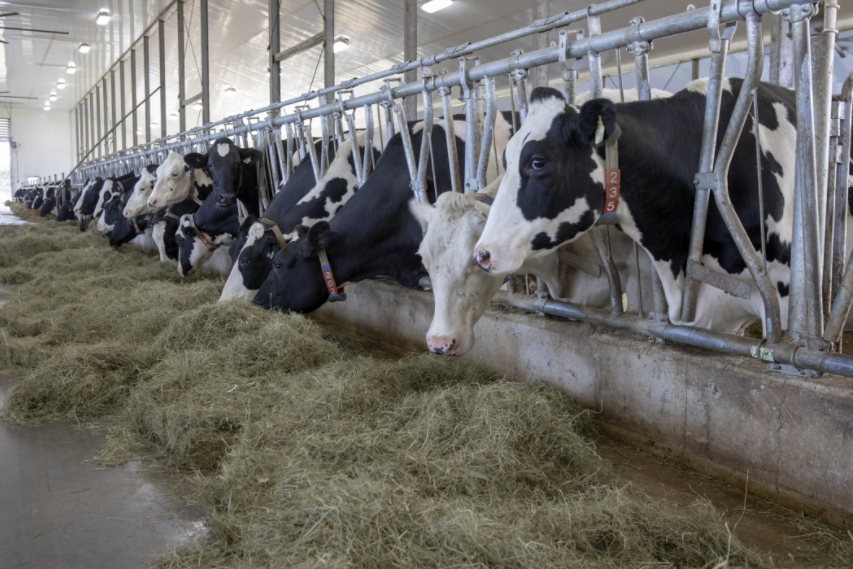Burim Ametaj is a professor of physiology and nutritional immunology at the University of Alberta and has been studying dairy cow health for the majority of his career. Ametaj and his research partner, David Wishart, have been working on a test for the past 10 years that would provide dairy producers with the capability to take a blood or urine sample from a cow, near and during the dry-off period, to determine whether or not the cow is susceptible to mastitis.
Wishart says, “In 2016 and 2017, we obtained some promising results that allowed us to detect mastitis up to eight weeks before the disease appeared. This was very exciting and very promising. However, it was only done for a small number of cows, so we wanted to prove it could be done for a larger number of cows from different breeds or farms.” In 2018, the pair received further funding to expand their research.
Ametaj explains the technology will be a key step in preventing mastitis cases in dairy herds. It is made possible because of new instruments that are highly sensitive to the presence of various metabolites in the bodily fluids of humans and animals. Ametaj began developing the test after a study he conducted in the burgeoning field of metabolomics, of which he considers himself and Wishart “pioneers.” Ametaj wanted to develop a test that could be done easily so producers could place a larger focus on prevention of mastitis, not its treatment. Ametaj says, “Most of the tests we have for cows [now] are diagnostic.” He suggests preventative measures are the best way to go. “It is more difficult to treat a disease than to prevent it,” he adds.
The test would provide an indication of the health of cows by measuring metabolites in the blood and urine. The presence or absence of various metabolites would then differentiate sick cows from healthy ones. Ametaj says cows susceptible to mastitis could possibly be screened before they show symptoms.
Once these susceptible cows are identified, producers would be able to perform selective therapy to treat only the cows that are infected. Ametaj says this would usually be equivalent to about 30% to 35% of the herd. It could also save producers the cost of using expensive teat sealants, as cows not found to be susceptible may not require their teats to be sealed.
The primary focus of test development right now is on mastitis, but Ametaj says the possibility exists to provide the same testing capabilities for metritis, lameness, milk fever, ketosis and retained placenta in the future. Ametaj says the biggest hurdle to achieve this will be funding.
The current mastitis test is slated to be finished by the spring of 2021 but, in order to go to market, Ametaj says more funding will be needed to commercialize the test and make it available to a large number of producers. “Under university conditions, we are not able to do mass production of the [test],” Ametaj says. Wishart notes, “Once the prototype is finalized, we would still need to prove that the instrument works consistently and that it works across different dairy farms and for different types of dairy cattle.” Ametaj says he would like to see the test distributed centrally with a commercial partner that already has widespread access to the Canadian dairy industry.
The current design is for a small handheld device that will deliver test results to a producer’s cellphone in a matter of minutes, using an algorithm Ametaj and his team have been developing. Wishart says, “By making the testing instrument the size of a cellphone, redesigning the test so that it is simple, so farmers can run them and [reducing] the cost of a test to about $3 per sample, then we could make [testing for mastitis] fast, simple and cheap.”
What makes this test unique from current mastitis tests is that it will screen for multiple “marker” metabolites. This means that instead of identifying a single metabolite known to be present in cases of mastitis, several metabolites will be identified, although Ametaj is not able to disclose exactly how many this will be. “You cannot characterise the disease by one metabolite,” Ametaj says. He notes, “The intention is to include multiple metabolites, so by including multiple metabolites you increase the accuracy.” The test is simple to administer, whether blood or urine is sampled, so Ametaj estimates the accuracy of the test to be nearly perfect when done correctly. He says, “The idea is to do a test that has very high accuracy, sensitivity and specificity, more than 95%.”
For Ametaj, the motivation behind offering a preventative test like he is developing is to reduce antibiotic use, thereby reducing the risk of antibiotic resistance. If the test is successful, antibiotics will not be required at the same rate they are currently being administered. Ametaj says the largest use of antibiotics on a dairy farm happens during the dry-off period and is a major concern for antibiotic resistance. This resistance has the potential to trickle down into other environments, affecting the use of antibiotics in other animals and even humans. Reducing the need for antibiotics also provides cost benefits. Because antibiotic resistance can impact humans and the environment, Ametaj says the potential for cost savings extends beyond the dairy industry. He says, “It’s an entire chain of profits.”
While it is still unknown when this mastitis test will be on the market, it provides hope for producers who presently generate large expenses treating mastitis in their herds. If Ametaj and Wishart’s predictions are correct, most dairy producers will have access to simple, accurate testing methods in a few years. ![]()
PHOTO: Photo by Mike Dixon.

-
Emma Ohirko
- Editorial Intern
- Progressive Dairy
- Email Emma Ohirko








